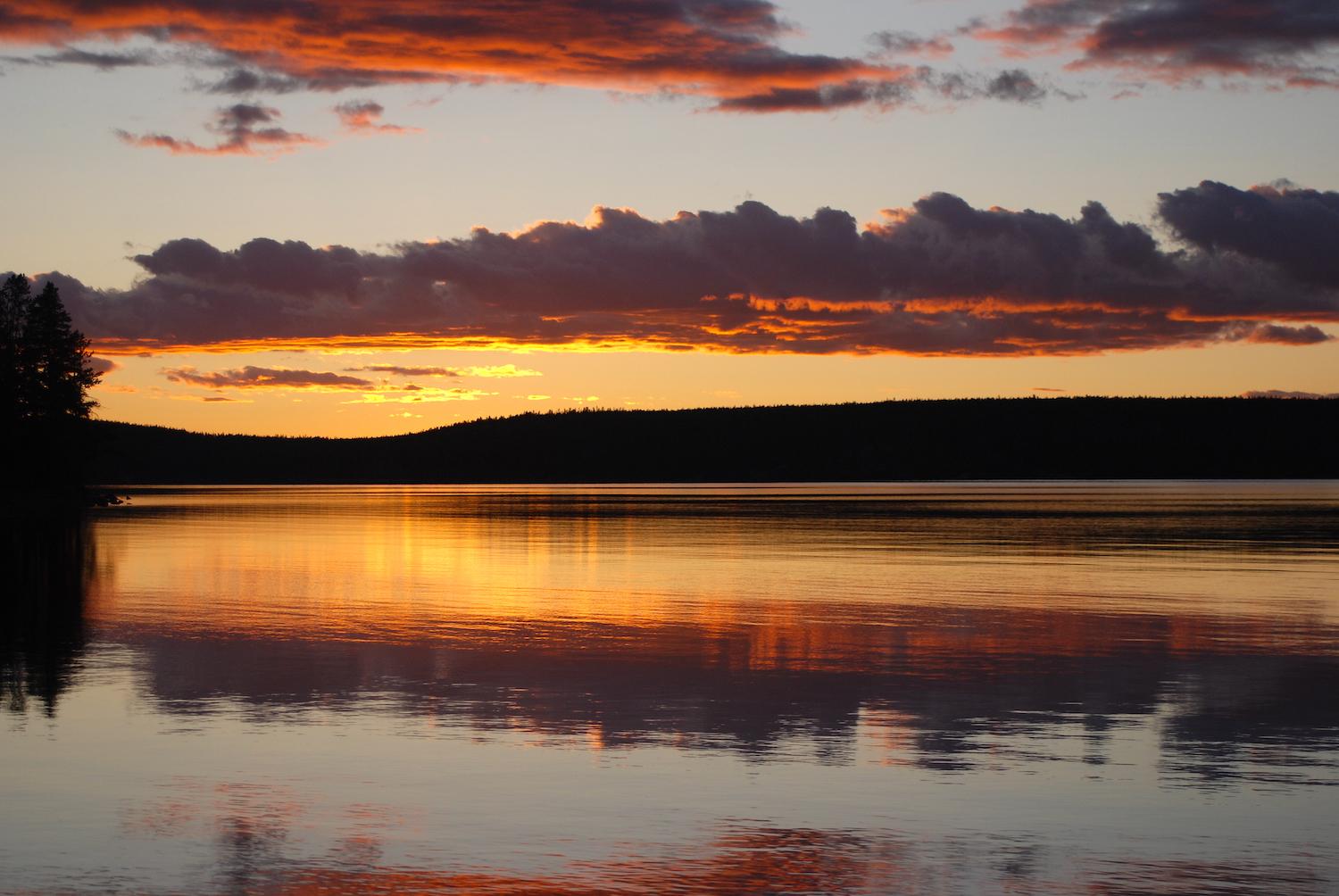
An invader plies the waters of Yellowstone Lake in Yellowstone National Park/Kurt Repanshek
Traveler Special Report: The Unknown Cost Of Invasive Species In The National Park System
By Lori Sonken
Editor's note: In a monthslong series, National Parks Traveler is investigating the situation with invasive plant and animal species in the National Park System. This installment examines the economic costs of the invasions.
It probably seemed like a good thing at the time, introducing lake trout into Lewis and Shoshone lakes in Yellowstone National Park in 1890 to give anglers a bigger catch. But when the big lunkers were illegally deposited into nearby Yellowstone Lake sometime in the 1980s, the predator nearly devoured the native population of Yellowstone cutthroat trout, an iconic species in its own right as well as a key food source for grizzly bears, otters, and osprey, before its discovery in 1994.
“We thought we were doing a good job. But the reality is, we didn’t act aggressively or quickly enough. We almost lost a keystone species,” said Cam Sholly, Yellowstone's superintendent.
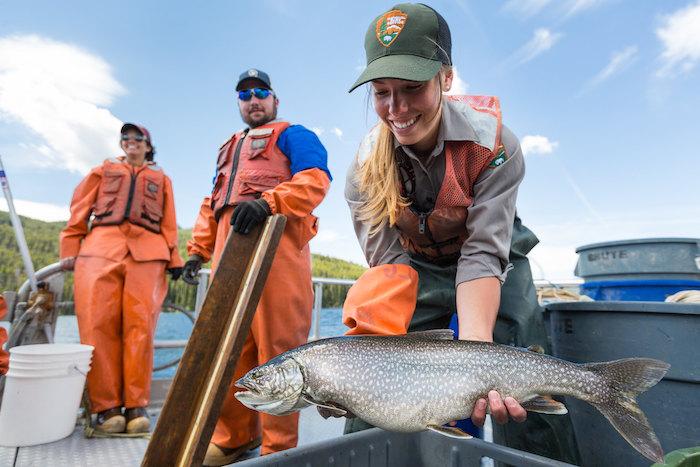
There is no limit on how many lake trout you can catch in Yellowstone National Park/NPS, Neal Herbert
Today, the park pays contractors who use hydraulic lifts on fleets to hoist 6,000 miles of gillnets filled with lake trout from the lake. More than 3.4 million lake trout have been removed, but crews might never entirely wipe out the population. The gillnet operation costs about $2 million annually, and lake trout removal expenses are expected to continue in perpetuity.
“We have basically a lifetime investment requirement in order to keep the lake trout where it needs to be. We’ll never fully eradicate the lake trout,” said Sholly.
Lake trout live 25 years or longer, weigh as much as 50 pounds, and eat up to 41 Yellowstone cutthroat trout per year. They are just one of about 6,500 nonnative species across the National Park Service's lands and waters, according to the Congressional Research Service.
The Unknown Costs Of Invasive Species
Invasive species cost an estimated $120 billion per year in environmental damages and losses nationwide, reported a widely referenced 2005 study co-authored by the late David Pimentel, professor at Cornell University.
The Department of the Interior Invasive Species Strategic Plan for 2021-2025, prepared by career staff and released at the end of the Trump administration, defines invasive as “… a nonnative organism whose introduction causes or is likely to cause economic or environmental harm or harm to human, animal or plant health.”
While all invasive species are nonnative, not all nonnatives are harmful.
“Confusion understandably abounds across the Service as staff struggle with nuances in the meaning of 'non-native' and 'invasive non-native,'" said Jessica Resnik, author of the 2018 NPS report, Biodiversity under Siege, Invasive Animals and the National Park Service
Over half the 423 units of the National Park System have invasive animals. Along with such aquatic invaders as the lake trout at Yellowstone and lionfish at Biscayne National Park, there are European starlings, feral cats, hogs, horses, and even cattle. Of the invasive animals in parks, only 11 percent are contained, said Resnik
There also are invasive plants infesting more than 2 million acres of Park Service lands. Only 51,000 acres are reportedly under control.
The Biden administration requested $175.9 million in Fiscal Year 2022 for the Interior Department to manage invasive species -- $26.5 million more than the amount Congress provided in FY 2021. NPS received about $20 million annually in FY 2019 and 2020, said Jeffrey Olson, director of communications with the Park Service’s Natural Resource Stewardship and Science Directorate.
These numbers do not account for millions of dollars invested by states, other federal agencies, educational institutions, private entities, and volunteers collaborating on invasive species management.
“Therefore, it is hard to quantify exactly how much money is spent in each park especially for early detection and rapid response and monitoring,” said Anna O’Brien, the agency's Invasive Plant Management Liaison, in an email.
Invasive species have indirect costs, too. For example, fewer customers came to Yellowstone to fish when the cutthroat population declined, resulting in an estimated $36 million in annual lost revenues to nearby businesses, according to the U.S. Geological Survey.
Battling Invasives
Several laws, the strategic plan, Executive Order 13751, and NPS policies guide management, but there is no comprehensive statute addressing invasive species.
At the National Park Service, 17 Invasive Plant Management Teams provide “expertise and boots-on-the-ground” to more than 200 parks across NPS. NRSS and the regions guide the parks as well, said Olson.
Parks spend millions of dollars annually on management solutions “…but without a larger (e.g., multi-park or regional) strategy or necessarily with effective outcomes,” said Resnik’s report.
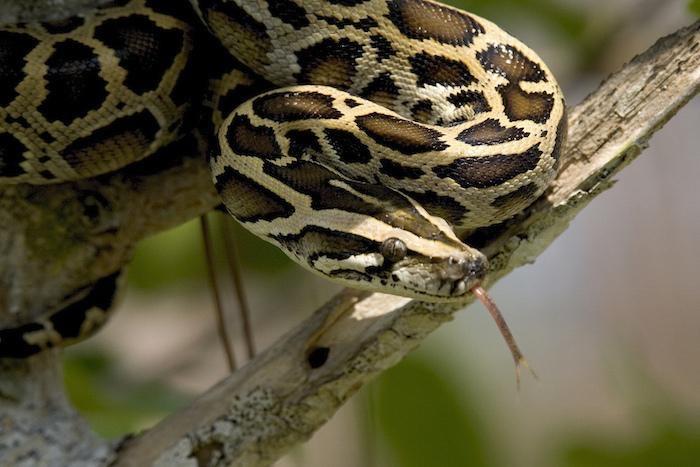
Burmese pythons have overrun the landscape at Everglades National Park/NPS file
Imported ornamental plants and pets that escape account for costly invasive species in the United States. For example, tens of thousands of Burmese pythons flood Everglades National Park and Big Cypress National Preserve next door; they likely started out as captive pets introduced accidentally, or intentionally, to the parks.
Pythons grow up to 18-feet-long and weigh 250 pounds. In the parks, the predator competes with native wildlife for food and are likely responsible for the incredible drop in the racoon, opossum, rabbit and bobcat populations in Everglades and Big Cypress. To eliminate the predator, the Park Service has paid hunters $8.46 per hour, in addition to $50 for pythons measuring up to 4 feet long, and an additional $25 for every foot beyond that.
“Congress should provide the authorization and appropriations for development of innovative, cost-effective tools for surveillance, early detection, and rapid response. You can’t manage something you can’t measure,” said David Lodge, professor and director at the Cornell Atkinson Center for Sustainability.
Lodge recommends that Congress amend the Lacey Act, a law passed in 1900 that was the first on the books designed to protect native wildlife, to prohibit all animal imports, unless they are safe. Under existing law, wild vertebrates and other animals can be imported unless the Secretary of the Interior determines they are injurious to humans, agriculture, and other natural resources.
“The policy is still largely shaped by an 'innocent until proven guilty' approach. This is great if you are talking about humans accused of a crime. It’s not so great if you are thinking about millions of species that could be imported and cause harm,” he said.
However, Congress has no immediate plans to consider invasive species authorizing legislation, according to Congressional staff.
Aquatic Invaders
DOI spent $17 million in FY 2019 to prevent, control, and contain invasive quagga and zebra mussels nationwide. For the Park Service, about $3 million annually goes to address quagga and zebra mussels at nine Western parks, such as Glen Canyon National Recreation Area in Utah and Arizona and Lake Mead National Recreation Area in Nevada.
Discovered in North America in the mid-1980s, the mussels most likely came from ballast water released into the Great Lakes by ships from Europe. Spawning twice yearly, females can release a million eggs at a time.
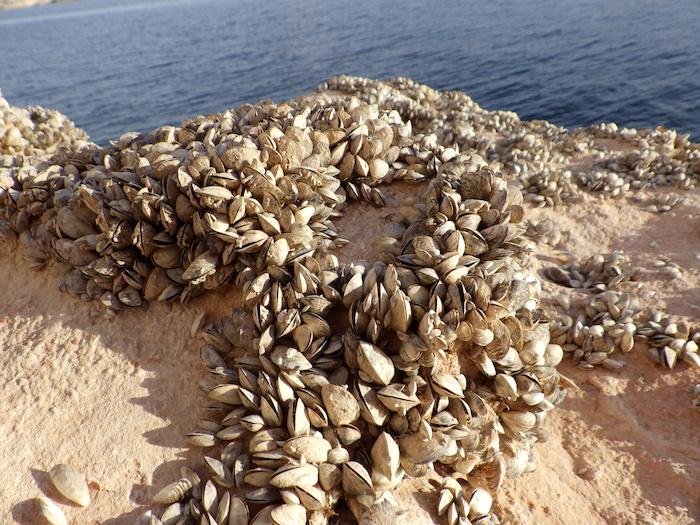
Lake Powells receding waters have revealed countless quagga mussel shells across the lake/Kurt Repanshek
“The potential for disaster is huge,” said William Bruggeman, supervisory park ranger and aquatic and invasive species coordinator at Curecanti National Recreation Area.
Sticking like barnacles, the mussels clog intakes for urban water supplies and nuclear power plants, and foul boat engines. Boats leaving Lake Powell almost always have mussels attached, and the Park Service requires a mandatory inspection and decontamination, if necessary, when vessels are pulled from the lake.
Working with Colorado state, Curecanti National NRA inspects all motorized and trailed watercraft for aquatic invasive species prior to launch. Inspectors run their hands across the hull. If a sandpaper-like material is detected and doesn’t peel away easily the watercraft goes to a decontamination machine, similar to a car wash. Water at temperatures as high as 140 degrees and at various pressures, from garden hose to 3,000 psi, is sprayed on the boats. The watercraft is then dried and also drained, at no expense to the owner.
“The cool thing about this is you can kill the mussels,” Bruggeman said.
More than $13 million is spent annually to prevent the mussels from spreading to the Pacific Northwest, where an infestation could cost the region $500 million annually, according to DOI’s strategic plan.
For invasive plants, treatment varies from hand pulling and digging up small populations to chemical spraying. Mark A. Davis, biology professor at Macalester College, recommends that the Park Service ascertain whether the species is causing measurable negative economic effects before removing the invader. In an email, he advised land managers to evaluate whether “subsequent management/eradication efforts justify the financial costs and undesirable environmental and health effects of the management efforts, e.g., if chemicals are used to eradicate/manage the nonnative species.”
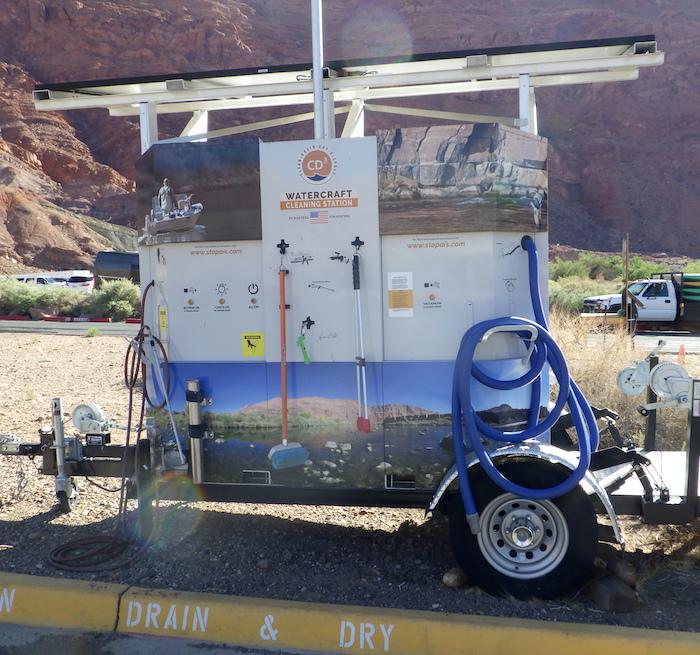
At Lees Ferry in Glen Canyon NRA, a solar-powered cleaning station is available for boaters to prevent the spread of quagga mussels/Kurt Repanshek
At Kenai Fjords National Park in Alaska, Roundup Custom herbicide (aka glyphosate) was sprayed “in the morning at the picnic area to avoid conflicts with visitor use,” says NPS’s 2020 summary report. Approved by the Environmental Protection Agency, glyphosate is “probably carcinogenic” to humans, reported a 2015 designation by the International Agency for Research on Cancer within the World Health Organization.
Mark Whitmore, senior extension associate in Cornell’s Department of Natural Resources and the Environment, disagrees with Roundup critics. An expert in the biological control of forest insect pests, he said insecticides can be effectively applied when used on spot infestations rather than broadcast across the landscape.
“We will lose the hemlock trees if we don’t use herbicides. It’s the only real tool we have to save trees,” he said.
Found in Great Smoky Mountains National Park in 2002, the hemlock wooly adelgid is controlled through a biologically based pest management approach. Initially, a pesticide, similar to the flea and tick medicine applied to dogs and cats, is injected into the base of the tree leading to the roots. Subsequently, the park releases two beetles to prey on the invasive insects in a bid to re-establish the ecosystem’s predator-prey balance, followed by long-term monitoring, said Jesse Webster, a forester at the park.
More than 300,000 trees have been treated in Great Smoky, the third-most-visited national park in 2020. The park had to close Parsons Ranch Road due to the threat posed by falling hemlock trees, but Hemlock-shaded picnic areas, campgrounds and hiking trails remain open.
“There’s lots of optimism about where we are going to end up. This is not the next chestnut blight,” Webster said.
Still, the extent of the land and water invasion is significant.
"I don't know that it's insurmountable," said Terene Ruane, who has been working on invasive species control since 2004 for Cardno, an environmental consulting firm that works with the Park Service in some areas. "But I do think it will take a lot more resources than we're throwing at it right now."
Previous articles in the series:
Traveler Special Report: The Invasion Of The National Park System
Invasive Fish in National Parks: Voracious, Deadly Invaders Ply National Park Waters

Comments
Reporters keep getting the IARC classification system wrong by seeing the word "probably" without taking the time to try to understand the context its used in. The job of the IARC is to assess whether or not there is potential in the literature to cause cancer. They classify agents into known, probable (possible under certain circumstances), and no known cancer risk. In the case of glyphosate, the current literature shows you basically have to bath in it for 30 years without using the label required working protection standarsd to even have a slight chance of getting cancer. It's hard to get a jury to understand this so, of course, the big chemical companies like Bayer just find it easier to pay a large settlement and be done with the legal headache.
https://www.cancer.org/cancer/cancer-causes/general-info/known-and-proba... "Carcinogens do not cause cancer at all times, under all circumstances. In other words, a carcinogen does not always cause cancer in every person, every time there is any kind of exposure. Some may only be carcinogenic if a person is exposed in a certain way (for example, swallowing it as opposed to touching it). Some may only cause cancer in people who have a certain genetic makeup. Some of these agents may lead to cancer after only a very small exposure, while others might require intense exposure over many years. Again, refer to the agencies' reports for specifics."
By far the most destructive and disruptive invasive species in the planet's history is Homo sapiens (sic).
Every species sooner or later goes extinct, ours included. Here's hoping we don't take everything else with us.
Regarding the comment above, glyphosate indeed is carcinogenic and I recommend reading about the differences between the IARC classification and that of the US EPA. Add in the levels of ghostwritten research and industry pressuring the EPA, and then you shoudl be highly concerned that this toxic chemical is sprayed anywhere near you, your family, or national parks.